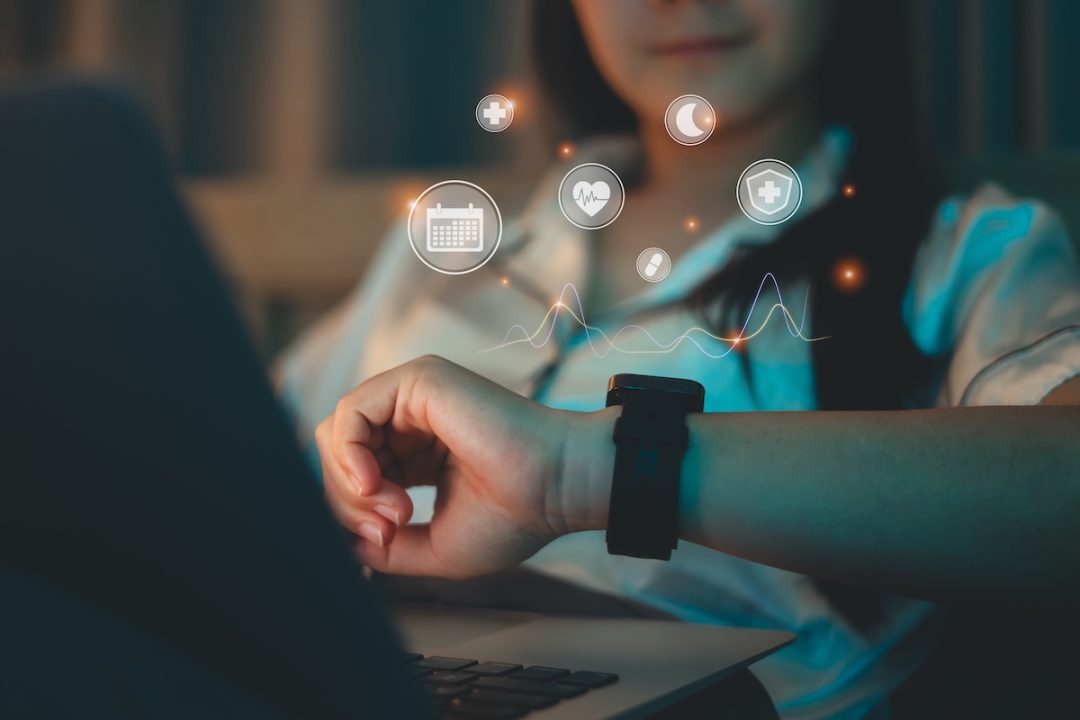
Health and Human Services (HHS) Secretary Robert F. Kennedy Jr. announced that his department would promote the widespread adoption of biometric wearable devices as “a key part of our mission to Make America Healthy Again.”
Speaking Tuesday before the House Committee on Energy and Commerce’s Subcommittee on Health, Kennedy strongly endorsed personal health wearables, such as glucose monitors and heart-rate sensors.
The secretary said,
It’s a way people can take control over their own health. They can take responsibility. They can see, as you know, what food is doing to their glucose levels, their heart rates, and a number of other metrics, as they eat it.
Kennedy also revealed that HHS is preparing to launch “one of the biggest advertising campaigns in HHS history” to promote wearable use across the American public. His ambition is sweeping:
My vision is that every American is wearing a wearable within four years.
He compared the $80 cost of a wearable to the $1,300 monthly price tag of a weight-loss drug like Ozempic. Prevention, he argued, is not only healthier, but far more cost-effective.
Yet beneath the language of empowerment lies another layer: the systematic pursuit of biometric data. Of course, Kennedy did not say this explicitly. But the structure of the policy leaves little room for ambiguity. In a health regime built on data, continuous self-tracking is no longer a purely private act. It becomes a functional contribution to a national health surveillance architecture.
What Are Wearables?
Wearable devices include wristbands, rings, skin-adhered patches, and other compact technologies worn directly on the body. Some, like glucose monitors, feature a tiny sensor that sits just beneath the skin to capture biometric data in real time. They passively stream biometric data — heart rate, glucose levels, blood oxygen, sleep cycles, posture, and stress signals.
Some devices can track not just vitals, but behavioral indicators like sleep consistency, step counts, dietary spikes, and even emotional fluctuations. Then then funnel this data into proprietary analytics engines tied to cloud platforms.
For example, “Levels,” the wearable company co-founded by Trump’s U.S. Surgeon General nominee Casey Means, markets a line of AI-powered patches that provide “24/7 preventive insight” into the user’s health profile.
On the surface, such technologies promise convenience, optimization, and awareness. But embedded in their logic is a subtle shift. Health is no longer something sensed and experienced, but something that must be continuously quantified, monitored, and corrected — by machines.
CHD: Risks of Radiation Exposure
Children’s Health Defense (CHD), founded by Kennedy, warns that wearable tech exposes users — especially children — to harmful levels of non-ionizing electromagnetic radiation (EMF) from Bluetooth, Wi-Fi, and 5G.
In 2021, CHD won a major case against the FCC. The D.C. Circuit Court ruled the agency had ignored scientific evidence of neurological, reproductive, and cognitive harms by refusing to update its 1996 safety standards.
CHD cites peer-reviewed studies linking low-level EMF exposure to sleep disruption, headaches, behavioral issues, and potential neurodevelopmental damage. With wearables worn 24/7 and often mandated in schools or jobs, CHD argues that today’s cumulative exposure is untested.
They call for independent oversight, updated safety limits, and the right to opt out of biometric tracking.
From Health Tools to Surveillance Infrastructure
CHD also warns that wearables also serve as sensors in a growing global surveillance network.
Smartwatches, rings, patches, and home devices all feed into the Internet of Things (IoT). CHD highlights its biological frontier: the Internet of Bodies (IoB). There devices are worn, implanted, or ingested to monitor — and potentially modify — human behavior.
As 5G — and soon 6G — networks expand and wearables become normalized, CHD warns, Americans will drift into a biometric surveillance regime disguised as wellness.
CHD cites Kennedy’s own warning:
Bill Gates says that his satellite fleet will be able to look at every square inch of the planet 24 hours a day. That’s only the beginning. He hopes to be able to follow you through all of your smart devices, facial recognition, GPS.
The push is not limited to Gates. It dovetails with broader defense-driven initiatives like the Trump administration’s “Golden Dome” — a satellite-based national security mesh designed to achieve persistent orbital surveillance. While billed as a shield, critics suggest it also enables top-down population monitoring. In this context, wearables cease to be mere lifestyle tools.
“Take Control” or Be Controlled?
Secretary Kennedy’s refrain — that wearables help Americans “take control” of their health — carries the tone of empowerment. But the reality is more complicated.
Long before the digital-health boom, people managed their well-being through sleep, exercise, diet, and instinct. These practices required no sensors, apps, subscriptions, or AI dashboards. Health was personal, intuitive, and self-directed.
That is no longer the case. In May, HHS announced the creation of a national health database that will combine federal and private data sources – including metrics from wearable devices. Spearheaded by the National Institutes of Health (NIH) and the Centers for Medicare & Medicaid Services (CMS), the initiative aims to analyze trends in autism and other chronic conditions. The official goal is to uncover root causes.
The real-time biometric data, collected through personal devices and made accessible to the government via public-private partnerships, such as the one with Google (Fitbit), will now feed directly into centralized federal analytics platforms.
Palantir
This is not an isolated development. The NIH and CMS platform aligns with a much broader federal initiative quietly advancing in parallel.
As reported earlier this month, the Trump administration enlisted Palantir Technologies to create a unified database of every American. The project aims to link all major federal datasets, with the stated goal of eliminating bureaucratic duplication and detecting fraud. Yet, considering Palantir’s deep ties to the CIA and track record of surveillance projects, critics call it what it is: the construction of a comprehensive dossier on the entire population.
Kennedy’s wearable vision, when plugged into this infrastructure, ceases to be a health initiative. It becomes a biometric annex of a social-control apparatus.
Wearables and the Globalist Agenda
Globally, wearables fit neatly into a rising vision of digital health embedded in governance.
For example, the World Economic Forum (WEF) has positioned AI-enabled wearables, spatial computing devices, and extended‑reality tools as the next frontier in data‑driven health systems. The WEF’s Centre for Health and Healthcare launched its Digital Healthcare Transformation Initiative to scale data‑driven monitoring worldwide. Their argument: With 40 million health‑trackers generating 75 percent of clinical data by 2024, it’s time to harness this input for preventive care.
Likewise, the World Health Organization’s (WHO) Global Strategy on Digital Health (2020–2025) aims to deploy interoperable digital systems across countries. Central to this effort are SMART Guidelines. Although they do not explicitly mandate wearables, the guidelines clearly aim to integrate real-time health data from all sources, including personal devices. WHO’s framework ensures digital systems are standards-based, machine-readable, and interoperable, facilitating seamless incorporation of biometric inputs.
Global bodies frame tech‑mediated self‑monitoring as “life-saving.” But behind this rhetoric lies a convergence of surveillance, governance, and international standards.
Finally, and perhaps most disturbingly, the globalists see continuous biometric data streams as central to the elites’ ambition to “hack” and “reengineer” human beings — and, ultimately, “the future of life itself.”
In a widely shared X post, medical-freedom advocate and international filmmaker Robin Monotti featured clips of WEF advisor Yuval Noah Harari declaring biometric surveillance “the most important event of the 21st century.” Harari argues that we are witnessing the end of natural evolution. The “new” evolution will be guided not by “some God above the clouds,” but by “driving forces” controlled by corporations and governments. The human body, in this view, becomes a system to be decoded, edited, and ultimately controlled.





